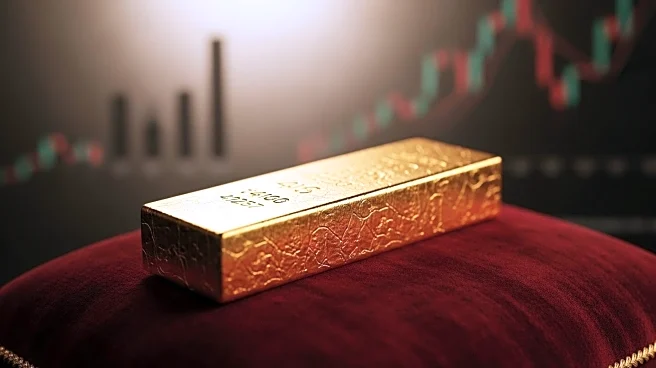What is the story about?
What's Happening?
Gold prices have reached a record high, surpassing $4,000 an ounce, as investors flock to the precious metal amidst growing economic and geopolitical uncertainties. This surge is driven by expectations of further interest rate cuts by the U.S. Federal Reserve. Historically, gold has been seen as a safe haven during times of financial instability, and current market conditions have prompted investors to move away from credit and into gold. Notably, Bridgewater Associates founder Ray Dalio has recommended that investors allocate up to 15% of their portfolios to gold, drawing parallels to the economic climate of the early 1970s, characterized by high debt and monetary uncertainty.
Why It's Important?
The rising gold prices reflect a broader trend of investors seeking stability in the face of economic volatility. This shift could have significant implications for financial markets, as traditional assets like stocks and bonds may see reduced demand. The increased interest in gold suggests a lack of confidence in paper assets and fiat currencies, potentially influencing monetary policy decisions. Stakeholders such as financial advisors and investment firms may need to reassess portfolio strategies to accommodate the growing preference for alternative assets like gold.
What's Next?
As gold continues to attract investors, financial markets may experience further shifts in asset allocation strategies. The U.S. Federal Reserve's actions regarding interest rates will be closely monitored, as they could impact gold's appeal as a safe haven. Additionally, geopolitical developments and fiscal policies will play a crucial role in shaping investor sentiment and the future trajectory of gold prices.
Beyond the Headlines
The surge in gold prices highlights the ongoing debate about the utility of gold as an investment. Despite skepticism from figures like Warren Buffett, who has historically questioned gold's practical value, the current economic climate underscores its role as a hedge against uncertainty. This situation may prompt a reevaluation of gold's place in modern investment portfolios, considering its historical significance and current market dynamics.
AI Generated Content
Do you find this article useful?














